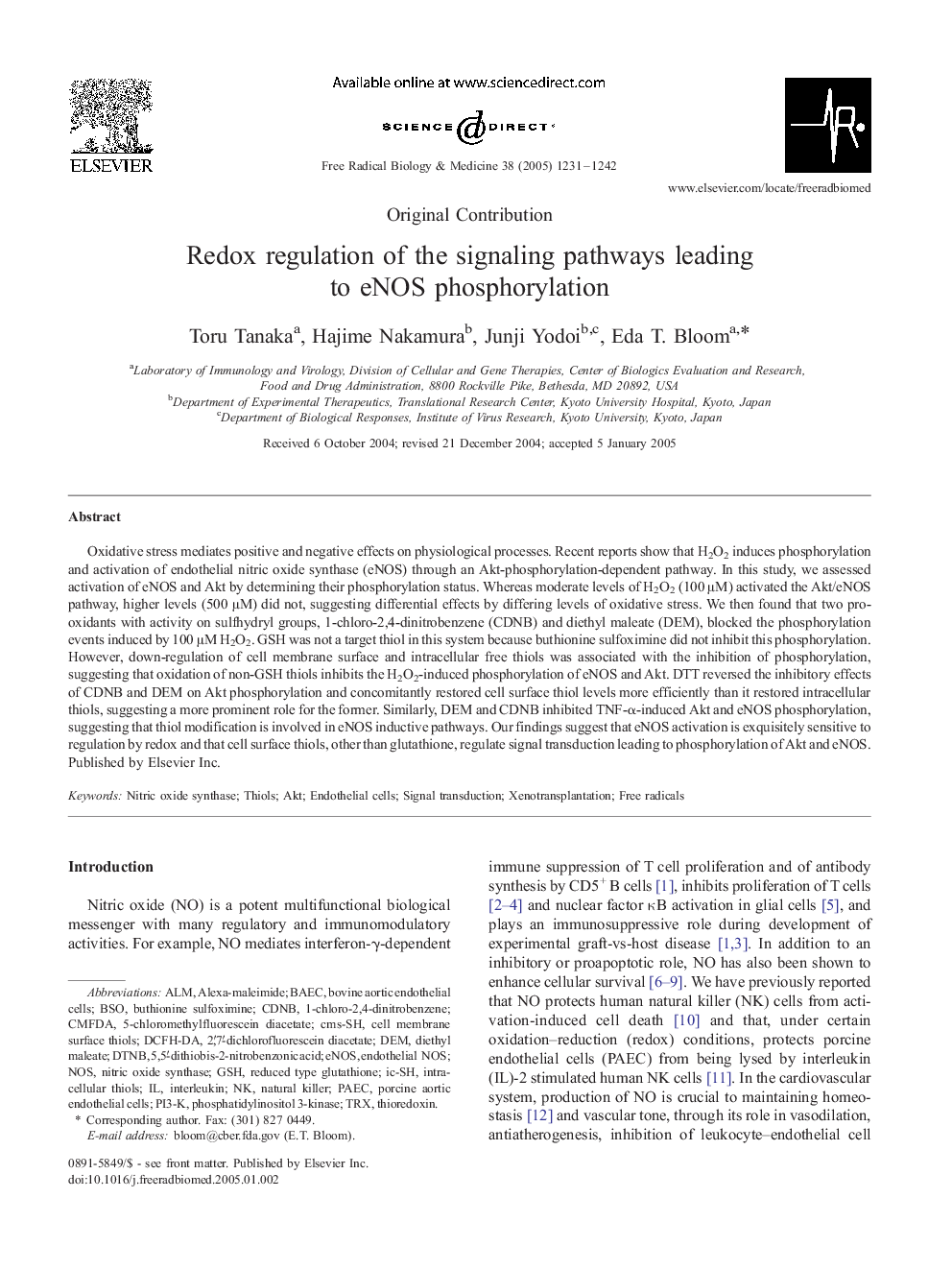| Article ID | Journal | Published Year | Pages | File Type |
|---|---|---|---|---|
| 10738879 | Free Radical Biology and Medicine | 2005 | 12 Pages |
Abstract
Oxidative stress mediates positive and negative effects on physiological processes. Recent reports show that H2O2 induces phosphorylation and activation of endothelial nitric oxide synthase (eNOS) through an Akt-phosphorylation-dependent pathway. In this study, we assessed activation of eNOS and Akt by determining their phosphorylation status. Whereas moderate levels of H2O2 (100 μM) activated the Akt/eNOS pathway, higher levels (500 μM) did not, suggesting differential effects by differing levels of oxidative stress. We then found that two pro-oxidants with activity on sulfhydryl groups, 1-chloro-2,4-dinitrobenzene (CDNB) and diethyl maleate (DEM), blocked the phosphorylation events induced by 100 μM H2O2. GSH was not a target thiol in this system because buthionine sulfoximine did not inhibit this phosphorylation. However, down-regulation of cell membrane surface and intracellular free thiols was associated with the inhibition of phosphorylation, suggesting that oxidation of non-GSH thiols inhibits the H2O2-induced phosphorylation of eNOS and Akt. DTT reversed the inhibitory effects of CDNB and DEM on Akt phosphorylation and concomitantly restored cell surface thiol levels more efficiently than it restored intracellular thiols, suggesting a more prominent role for the former. Similarly, DEM and CDNB inhibited TNF-α-induced Akt and eNOS phosphorylation, suggesting that thiol modification is involved in eNOS inductive pathways. Our findings suggest that eNOS activation is exquisitely sensitive to regulation by redox and that cell surface thiols, other than glutathione, regulate signal transduction leading to phosphorylation of Akt and eNOS.
Keywords
eNOSDemBAECALM5-chloromethylfluorescein diacetateCMFDATrxXenotransplantationBSOPI3-KCDNBDCFH-DADTNBGSHNOSPAECnatural killer1-chloro-2,4-dinitrobenzene2′,7′-dichlorofluorescein diacetateAktendothelial NOSinterleukinbuthionine sulfoximinethioredoxinThiolsdiethyl maleateFree radicalsporcine aortic endothelial cellsEndothelial cellsBovine aortic endothelial cellsPhosphatidylinositol 3-kinasenitric oxide synthaseSignal transduction
Related Topics
Life Sciences
Biochemistry, Genetics and Molecular Biology
Ageing
Authors
Toru Tanaka, Hajime Nakamura, Junji Yodoi, Eda T. Bloom,
